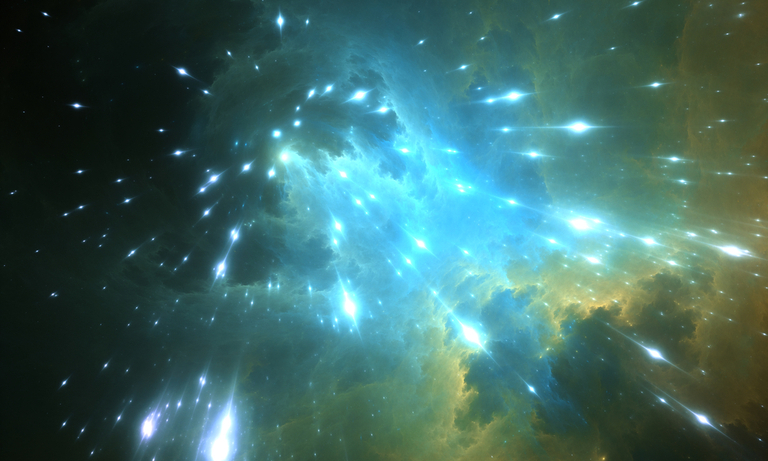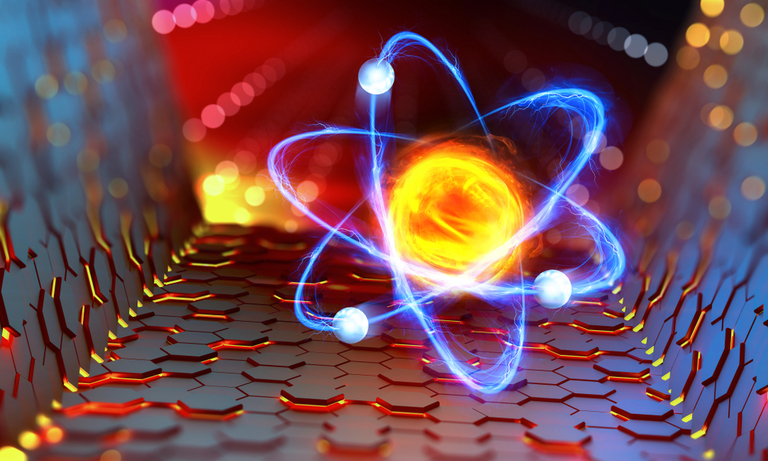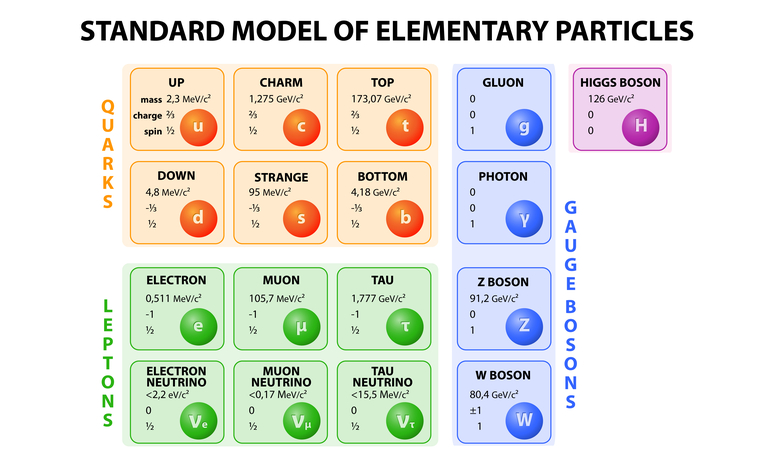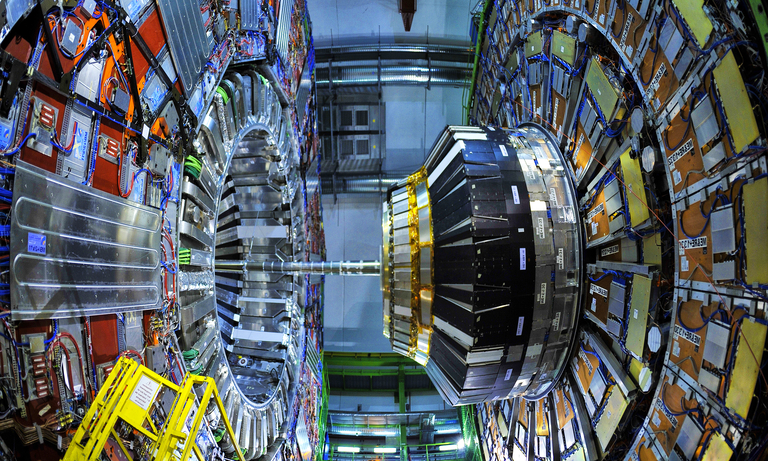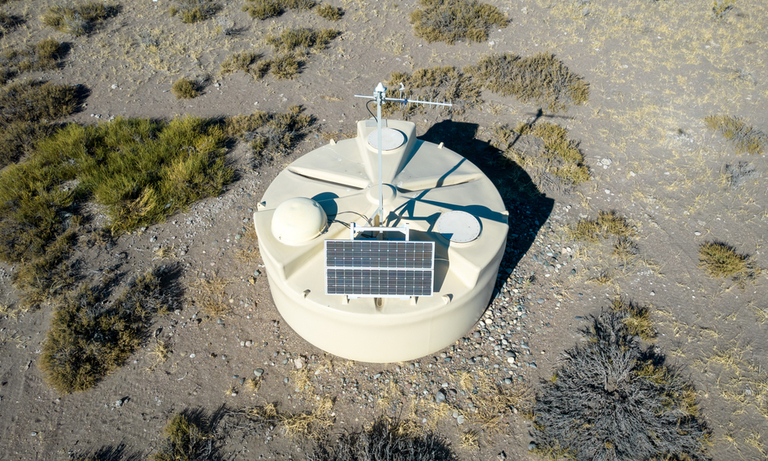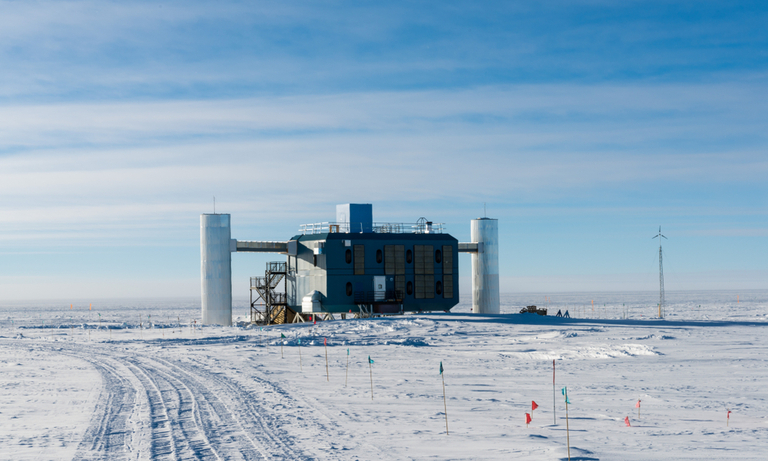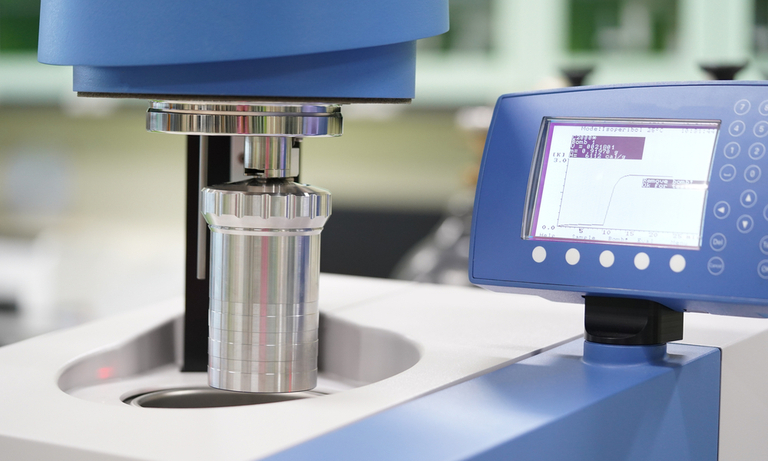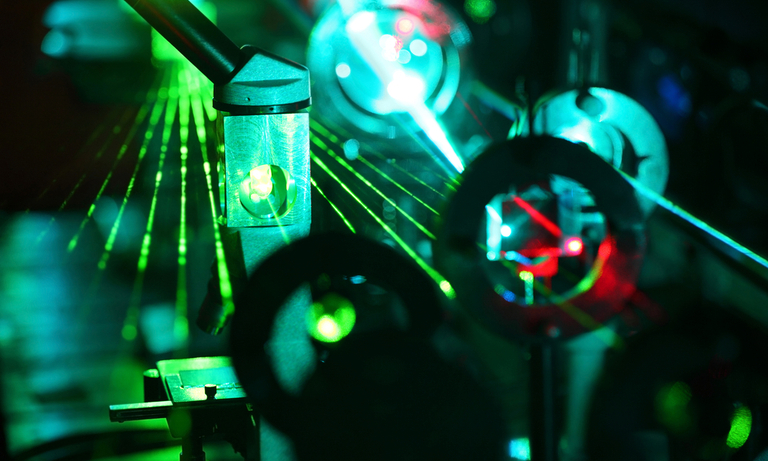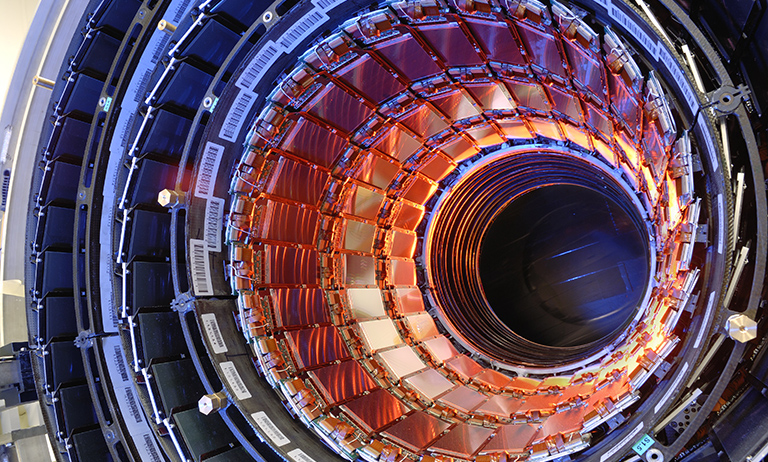Home
Products
Physics Research Field
Type of Experiment
Detector Type
Behind the Science
Tech in a Nutshell
United Kingdom (EN)
Select your region or country.


Spaceborne Satellite
X-rays and γ-rays are part of the electromagnetic spectrum with wavelength below 1nm (high energy photons). The study of X-rays and γ-rays from astronomical sources is called X-ray and γ-astronomy.
X-ray emission is expected from astronomical objects that contain extremely hot gases at temperatures from about a million kelvin (K) to hundreds of millions of kelvin (MK). Interaction of relativistic particles (e.g. electrons and protons) with low energy photons as well as matter, usually generate both X-rays and gamma-rays.
Extreme events such as supernovae, behavior of matter under extreme conditions (as in pulsars and blazars) are revealed by electron-positron annihilation, inverse Compton effect and, in some cases, by the decay of radioactive material (gamma-decay). Gamma-ray emission are also created by the presence of natural cosmic “particle accelerators” that are much more powerful with respect to those realized in the laboratories (i.e. LHC).
So, X and γ-astronomy allows for a deeper comprehension of these phenomena. Both X and γ-rays from cosmic sources are mostly absorbed by the Earth’s atmosphere. As a consequence, for the direct detection of cosmic X-rays and γ-rays it is necessary to place the experiment outside of the Earth’s atmosphere by means of a balloon or a satellite. Gamma-ray experiments on satellites usually exploit the e+e- pair production phenomenon. Once the γ photon cross the detector it starts an electromagnetic cascade that is detected by a tracker. This allows the reconstruction of the direction of the primary photon.
At the same time, a calorimeter provides the measurement of its energy. Thanks to these satellites is also possible to reconstruct images of the intensity and direction of the incoming X-ray signals. In the X-ray dedicated telescopes mounted on these satellites, the x-rays are totally reflected by a set of parabolic mirrors and are so focused on a camera.

FIG. 1 On the left: view of the CGRO satellite. On the right: scheme of its instrumentations The observatory was equipped with four instruments for γ observation
Gamma-astronomy made huge progress in ‘90s thanks to the observations of the EGRET instrument mounted on the CGRO satellite. CGRO enabled the discovery of 271 γ-sources with energy above 100 MeV.
The CGRO (Compton Gamma Ray Observatory) was a satellite observatory for the high-energy Universe. It was launched from Space Shuttle Atlantis during STS-37 on April 5th, 1991, and operated until its deorbit on June 4th, 2000. It was, at that time, the heaviest astrophysical payload ever flown at 17,000 kilograms and it made history in gamma-astronomy,
see FIG. 1.
- BATSE (Burst And Transient Source Experiment): searched the sky for gamma ray bursts (20 to >600 keV). It consisted of 8 modules mounted on each corner of the satellite. Each module was formed from a large NaI detector read by a PMT (Photomultiplier Tube).
- OSSE (Oriented Scintillation Spectrometer Experiment): consisted of 4 modules observing γ-rays in the [0.05; 10] MeV range. Each module consisted of a NaI scintillator read by 7 PMTs.
- COMPTEL (Imaging Compton Telescope): observed photons in [0.75;30] MeV energy range and determined the angle of arrival of photons. It consisted of two scintillator modules, with the aim to produce an image of the γ-source.
- EGRET (Energetic Gamma Ray Experiment Telescope): measured high energy (20 MeV to 30 GeV) γ-ray source positions. The tracks of the high-energy electron and positron created were measured within the detector volume, and the axis of the V of the two emerging particles projected to the sky. Finally, their total energy was measured in a large calorimeter scintillation detector at the rear of the instrument.
Another important and more recent (launched in 2008) γ-observatory is the Fermi satellite. The GLAST (Gamma Large Area Space Telescope), later called Fermi, is a space observatory for gamma rays which will allow the study of supermassive black holes and pulsars and will search for new physics.

FIG. 2 LEFT: Scheme of the Fermi telescope. RIGHT: Scheme of the LAT instrument.
The Fermi telescope is equipped with 2 instruments: GBM and LAT.
The Gamma-ray Burst Monitor (GBM) is sensitive in the range from 8 keV to 40 MeV. It consists of two sets of scintillators read by PMTs. It was designed to find up to 200 gamma ray bursts per year.
The Large Area Telescope (LAT) is the main instrument of the Fermi telescope. It is an imaging telescope, the next-in-line to EGRET, having double its sensitivity. The LAT instrument is made by a sequence of thin tungsten films (gamma-ray converter) and silicon strip detectors (SSD), FIG. 2. The gamma-ray converter is inserted between two 4 × 4 SSD arrays. The 18 tungsten converter layers and 16 dual silicon tracker planes are stacked in 16 modular "towers", for a total of approx. 9000 SSDs. A gamma-ray enters into the LAT instrument and continues until it interacts with an atom in one of the thin tungsten foils, producing two charged particles: an electron and a positron.
The electron and positron continue to travel through the detector, creating ions in thin silicon strip detectors which are measurable by the readout electronics of the detector. The silicon strips alternate in the X and Y directions, allowing the tracking of the particles in their path through the detector.
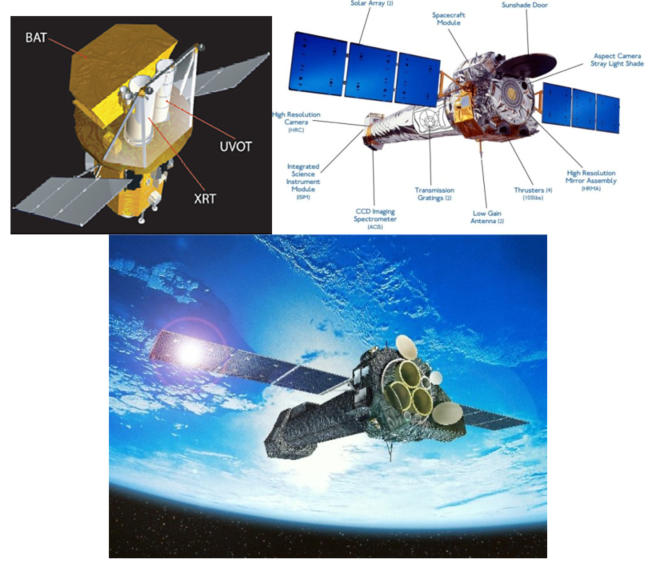
FIG. 3 TOP: The NASA SWIFT satellite (on the left) and CHANDRA (on the right). BOTTOM: The European Space Agency XMM-NEWTON satellite.
The first x-ray astronomy dedicated satellite was Uhuru, which in 1979 provided the first x-ray source map.
Thanks to x-ray astronomy, it has been possible to define the characteristics of pulsars and to study the already known collapsed stars (e.g. white dwarves, neutron stars, supernovae and black holes) as well as remnants and active galaxies that accelerate particles thanks to their high magnetic fields.
Currently, the satellites in orbit are XMM-NEWTON, CHANDRA and SWIFT, see FIG 3. They are designed to capture high definition images of x-ray sources.
Thanks to these satellites it is possible to reconstruct images of the intensity and direction of the incoming signals. In the telescopes mounted on the satellites, the x-rays are totally reflected by a set of parabolic mirrors and are so focused on a camera.

FIG. 4 Schematic view of the Chandra HRC.
The Chandra X-Ray Observatory combines the mirrors with four science instruments to capture and probe the X-rays from astronomical sources. The incoming X-rays are focused by the mirrors to a tiny spot on a High-Resolution Camera (HRC) that is one of the two instruments in the focus.
The primary components of the (HRC), FIG. 4, are two Micro-Channel Plates (MCP). A crossed grid of wires detects the electronic signal from the MCPs and allows the position of the original X-ray to be determined with high precision.
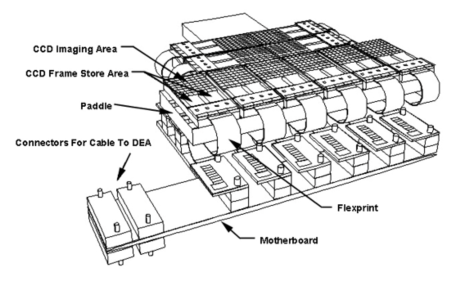
FIG. 5 Schematic view of the ACIS detector.
With this information astronomers can construct a finely detailed map of a cosmic X-ray source.
The HRC is especially useful for imaging hot matter in remnants of exploded stars, and in distant galaxies and clusters of galaxies, and for identifying very faint sources.
The Chandra Advanced CCD Imaging Spectrometer (ACIS) is the other focal plane instrument. As the name suggests, this instrument is an array of CCDs, see FIG 5.
This instrument is especially useful because it can make X-ray images, whilst at the same time, measure the energy of each incoming X-ray. Thus, scientists can make images of objects using only X-rays produced by a single chemical element, and so compare (for example) the appearance of a supernova remnant in light produced by oxygen ions to that of neon or iron ions. It is the instrument of choice for studying temperature variations across X-ray sources such as vast clouds of hot gas in intergalactic space, or chemical variations across clouds left by supernova explosions.
- Confirmation
-
It looks like you're in the . If this is not your location, please select the correct region or country below.
You're headed to Hamamatsu Photonics website for GB (English). If you want to view an other country's site, the optimized information will be provided by selecting options below.
In order to use this website comfortably, we use cookies. For cookie details please see our cookie policy.
- Cookie Policy
-
This website or its third-party tools use cookies, which are necessary to its functioning and required to achieve the purposes illustrated in this cookie policy. By closing the cookie warning banner, scrolling the page, clicking a link or continuing to browse otherwise, you agree to the use of cookies.
Hamamatsu uses cookies in order to enhance your experience on our website and ensure that our website functions.
You can visit this page at any time to learn more about cookies, get the most up to date information on how we use cookies and manage your cookie settings. We will not use cookies for any purpose other than the ones stated, but please note that we reserve the right to update our cookies.
1. What are cookies?
For modern websites to work according to visitor’s expectations, they need to collect certain basic information about visitors. To do this, a site will create small text files which are placed on visitor’s devices (computer or mobile) - these files are known as cookies when you access a website. Cookies are used in order to make websites function and work efficiently. Cookies are uniquely assigned to each visitor and can only be read by a web server in the domain that issued the cookie to the visitor. Cookies cannot be used to run programs or deliver viruses to a visitor’s device.
Cookies do various jobs which make the visitor’s experience of the internet much smoother and more interactive. For instance, cookies are used to remember the visitor’s preferences on sites they visit often, to remember language preference and to help navigate between pages more efficiently. Much, though not all, of the data collected is anonymous, though some of it is designed to detect browsing patterns and approximate geographical location to improve the visitor experience.
Certain type of cookies may require the data subject’s consent before storing them on the computer.
2. What are the different types of cookies?
This website uses two types of cookies:
- First party cookies. For our website, the first party cookies are controlled and maintained by Hamamatsu. No other parties have access to these cookies.
- Third party cookies. These cookies are implemented by organizations outside Hamamatsu. We do not have access to the data in these cookies, but we use these cookies to improve the overall website experience.
3. How do we use cookies?
This website uses cookies for following purposes:
- Certain cookies are necessary for our website to function. These are strictly necessary cookies and are required to enable website access, support navigation or provide relevant content. These cookies direct you to the correct region or country, and support security and ecommerce. Strictly necessary cookies also enforce your privacy preferences. Without these strictly necessary cookies, much of our website will not function.
- Analytics cookies are used to track website usage. This data enables us to improve our website usability, performance and website administration. In our analytics cookies, we do not store any personal identifying information.
- Functionality cookies. These are used to recognize you when you return to our website. This enables us to personalize our content for you, greet you by name and remember your preferences (for example, your choice of language or region).
- These cookies record your visit to our website, the pages you have visited and the links you have followed. We will use this information to make our website and the advertising displayed on it more relevant to your interests. We may also share this information with third parties for this purpose.
Cookies help us help you. Through the use of cookies, we learn what is important to our visitors and we develop and enhance website content and functionality to support your experience. Much of our website can be accessed if cookies are disabled, however certain website functions may not work. And, we believe your current and future visits will be enhanced if cookies are enabled.
4. Which cookies do we use?
There are two ways to manage cookie preferences.
- You can set your cookie preferences on your device or in your browser.
- You can set your cookie preferences at the website level.
If you don’t want to receive cookies, you can modify your browser so that it notifies you when cookies are sent to it or you can refuse cookies altogether. You can also delete cookies that have already been set.
If you wish to restrict or block web browser cookies which are set on your device then you can do this through your browser settings; the Help function within your browser should tell you how. Alternatively, you may wish to visit www.aboutcookies.org, which contains comprehensive information on how to do this on a wide variety of desktop browsers.
5. What are Internet tags and how do we use them with cookies?
Occasionally, we may use internet tags (also known as action tags, single-pixel GIFs, clear GIFs, invisible GIFs and 1-by-1 GIFs) at this site and may deploy these tags/cookies through a third-party advertising partner or a web analytical service partner which may be located and store the respective information (including your IP-address) in a foreign country. These tags/cookies are placed on both online advertisements that bring users to this site and on different pages of this site. We use this technology to measure the visitors' responses to our sites and the effectiveness of our advertising campaigns (including how many times a page is opened and which information is consulted) as well as to evaluate your use of this website. The third-party partner or the web analytical service partner may be able to collect data about visitors to our and other sites because of these internet tags/cookies, may compose reports regarding the website’s activity for us and may provide further services which are related to the use of the website and the internet. They may provide such information to other parties if there is a legal requirement that they do so, or if they hire the other parties to process information on their behalf.
If you would like more information about web tags and cookies associated with on-line advertising or to opt-out of third-party collection of this information, please visit the Network Advertising Initiative website http://www.networkadvertising.org.
6. Analytics and Advertisement Cookies
We use third-party cookies (such as Google Analytics) to track visitors on our website, to get reports about how visitors use the website and to inform, optimize and serve ads based on someone's past visits to our website.
You may opt-out of Google Analytics cookies by the websites provided by Google:
https://tools.google.com/dlpage/gaoptout?hl=en
As provided in this Privacy Policy (Article 5), you can learn more about opt-out cookies by the website provided by Network Advertising Initiative:
http://www.networkadvertising.org
We inform you that in such case you will not be able to wholly use all functions of our website.
Close


